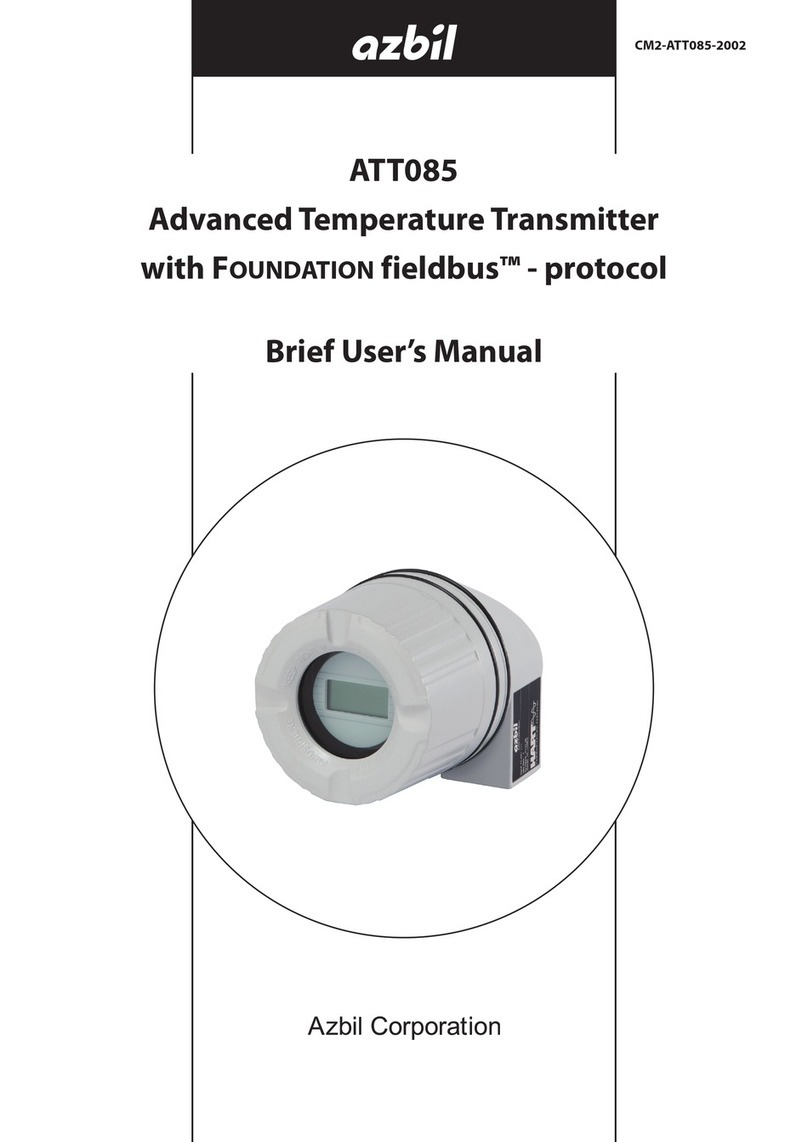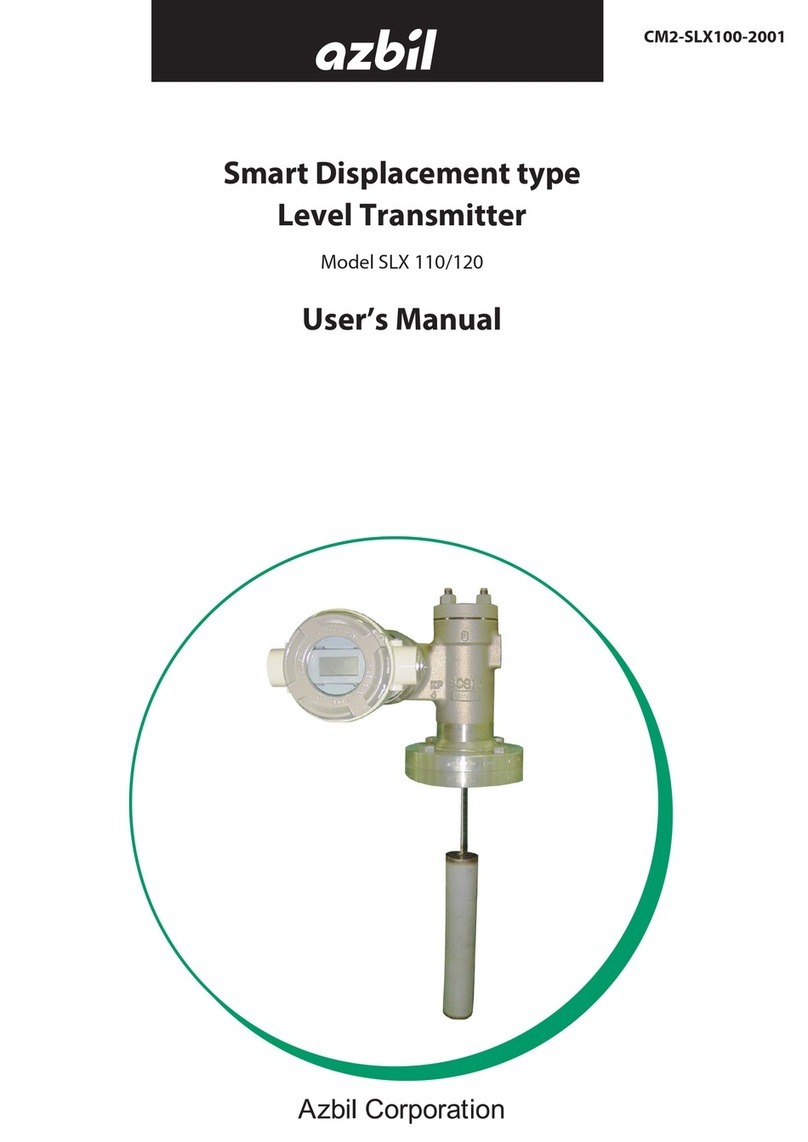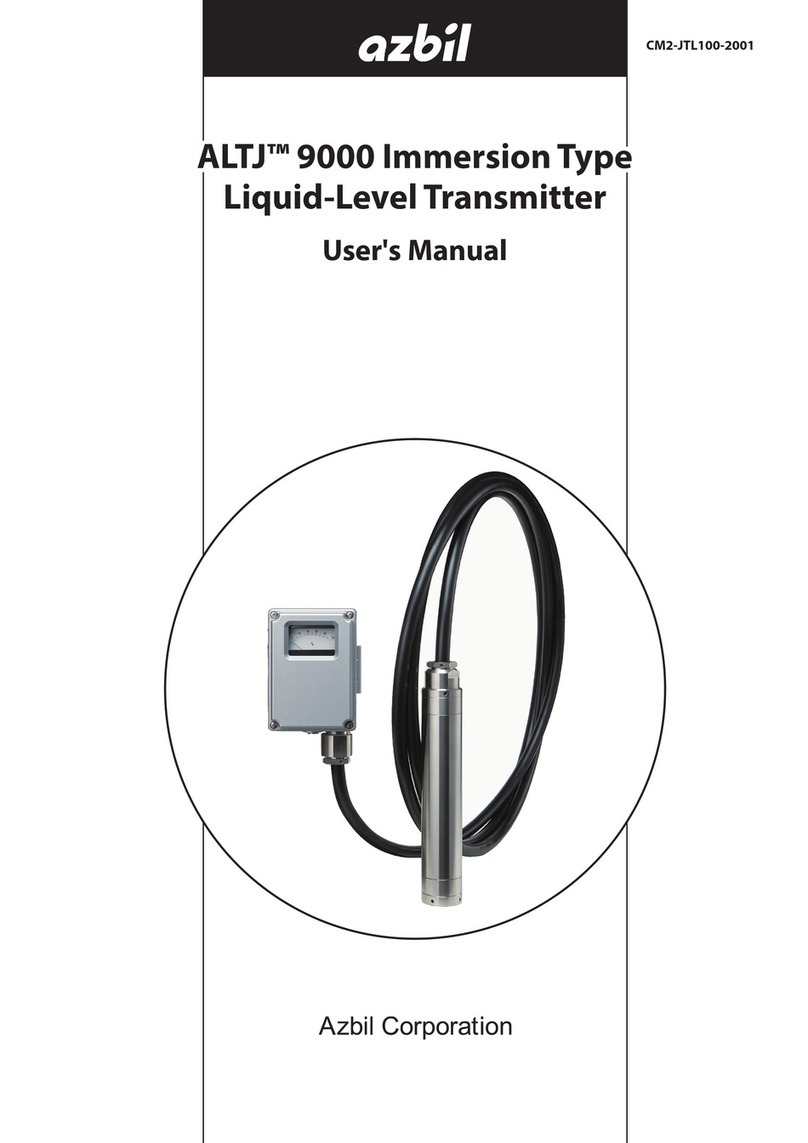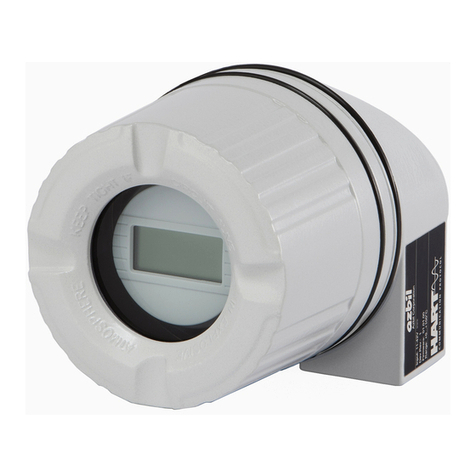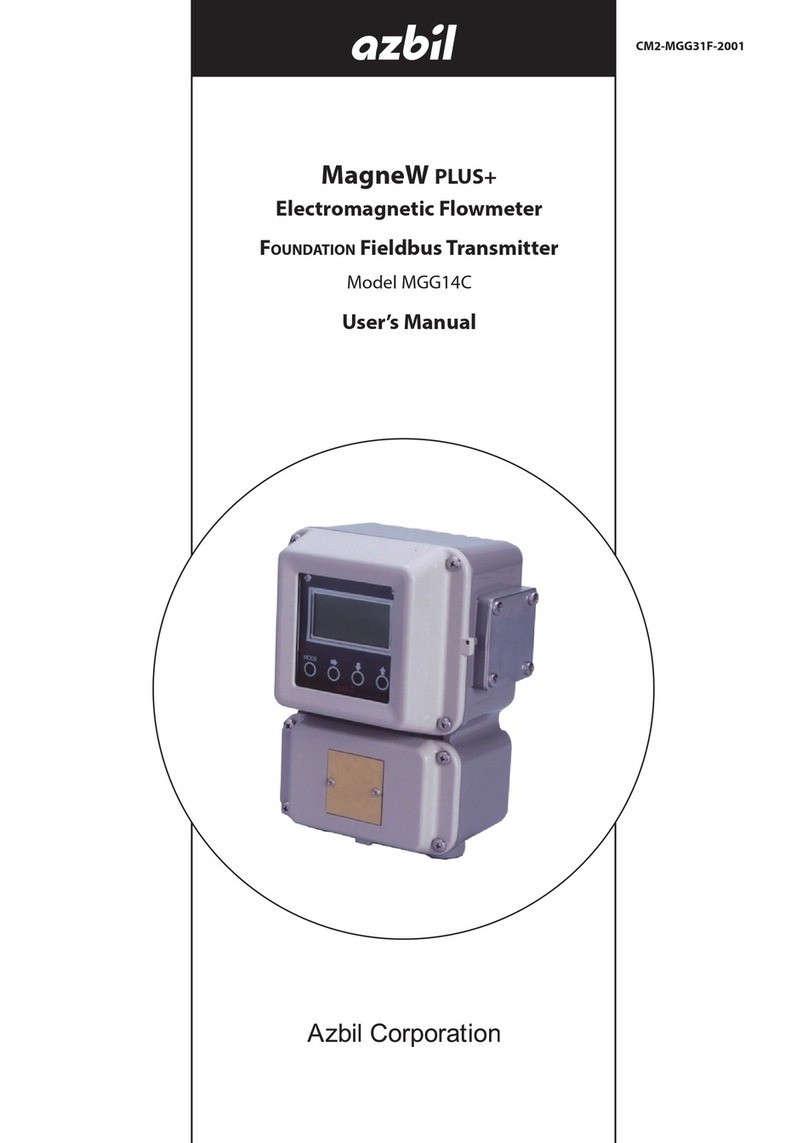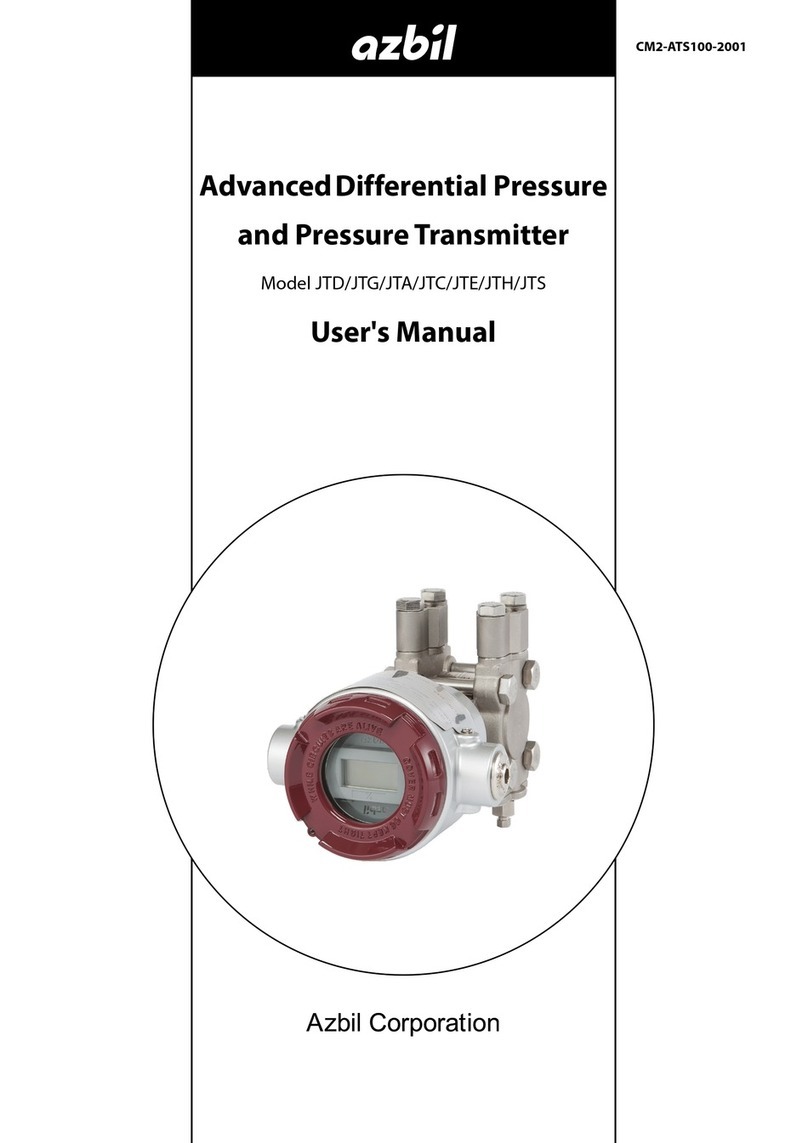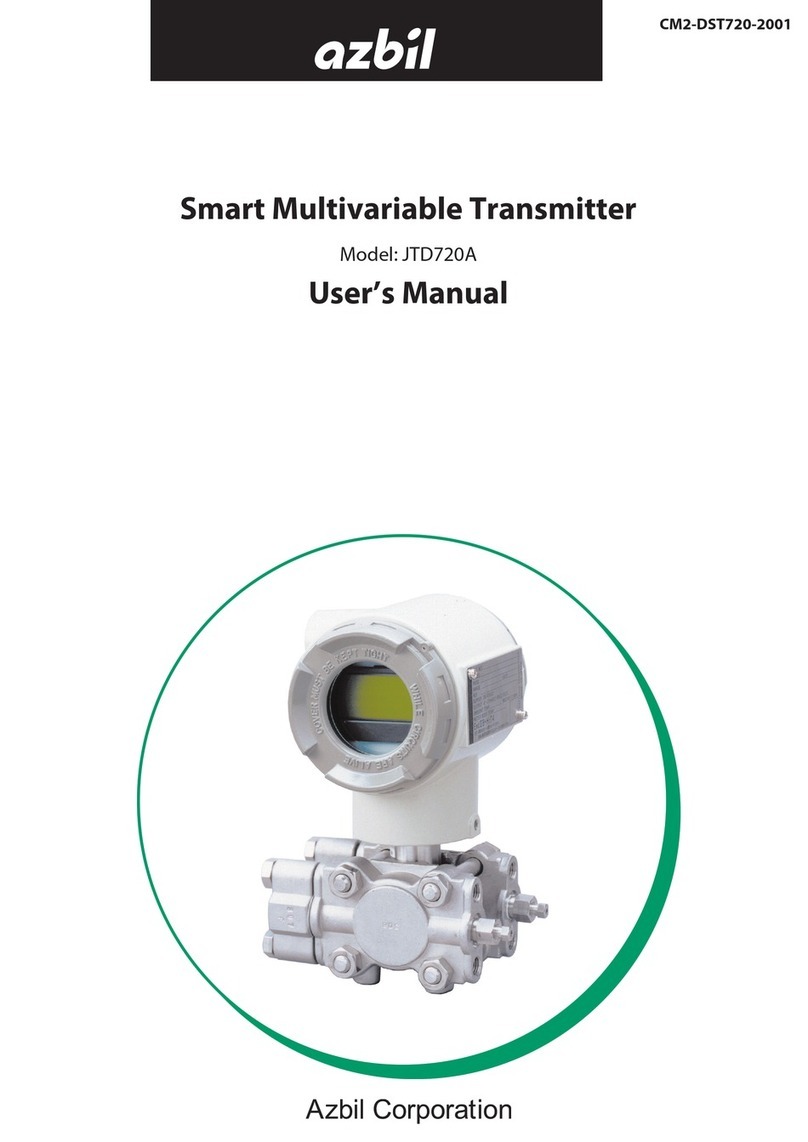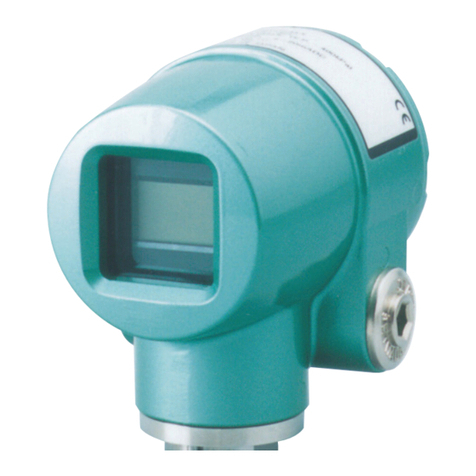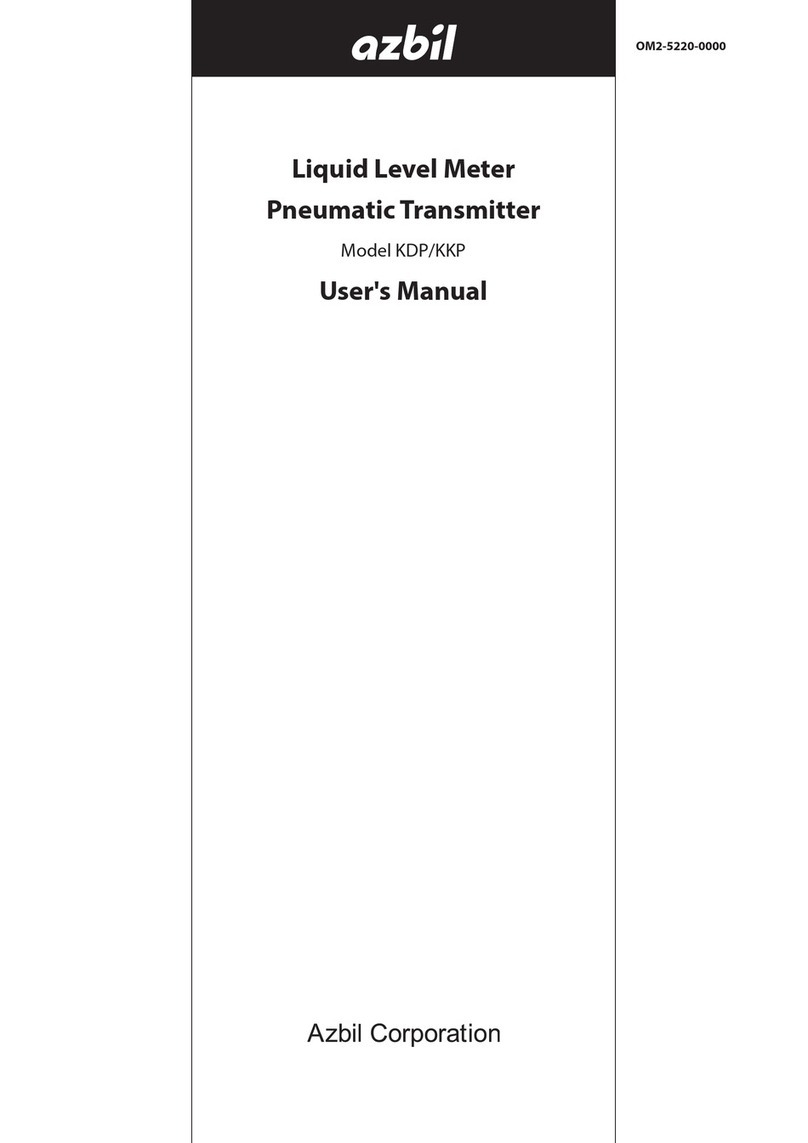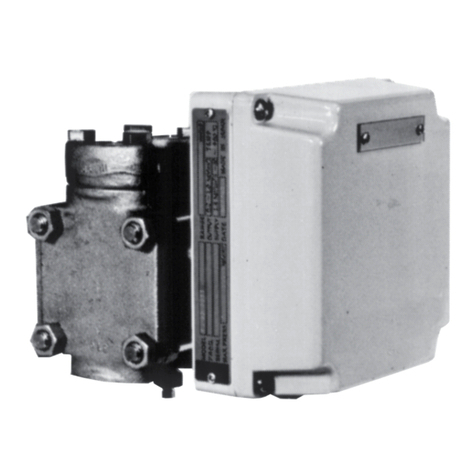
Azbil Corporation Preface
Model PTG71 / 72 - Smart Pressure Transmitter v
NEPSI Flameproof and Dust Certications
Smart Pressure Transmitter Model PTG, manufactured by Azbil Corporation,
has been approved by National Supervision and Inspection Centre for Explosion
Protection and Safety of Instrumentation (NEPSI) in accordance with the following
standards:
GB3836.1 - 2010 Electrical apparatus for explosive gas atmospheres
Part 1 : General requirements
GB3836.2 - 2010 Electrical apparatus for explosive gas atmospheres
Part 2 : Flameproof enclosure “d”
GB12476.1 - 2000 Electrical apparatus for use in the presence of combustible dust
Part A-1 : Electrical apparatus protected by enclosures and
surface temperature limitation - Specication for apparatus
Transmitters are approved with Ex marking of Ex d IIC T4–T6 Gb, DIP A20 TA,
T4–T6 IP67. The certicate number is GYJ14.1368X.
1. SPECIAL CONDITIONS FOR SAFE USE
When the sign “X” is placed after the certicate number, it indicates that the product
is subject to special conditions or instructions for safe use.
1.1 Special condition for safe use: The cover shall have at least 7 engaged threads.
1.2 Instructions for safe use: To maintain the degree of protection of at least IP67 in
accordance with IEC60529, suitable cable glands, conduit sealing devices or blanking
elements must be used and correctly installed.
2. CONDITIONS FOR SAFE USE
2.1 The external earthing terminal should be connected to the ground reliably at site.
2.2 The relation between temperature class, ambient temperature range, and the maximum
process temperature are shown below:
Temperature
Class
Ambient Temperature
Range
Maximum Process
Temperature
T4 -25°C to +60°C > 130°C
T5 -25°C to +60°C > 95°C
T6 -25°C to +40°C > 80°C
2.3 The cable entry holes have to be connected by means of suitable cable entry device with
type of protection of Ex d IIC Gb. The cable entry device shall be approved by NEPSI in
accordance with GB3836.1-2010, GB3836.2-2010, GB12476.1-2000, which are covered
by a separate examination certicate. The threads of the cable entries shall be 1/2-
14NPT. Unused entry holes shall be blocked by blanking elements. After installation of
the cable entry, the whole apparatus shall reach IP67.
2.4 The warning, “Do not remove cover while circuits are alive” must be obeyed when the
product is used in an explosive gas area.
